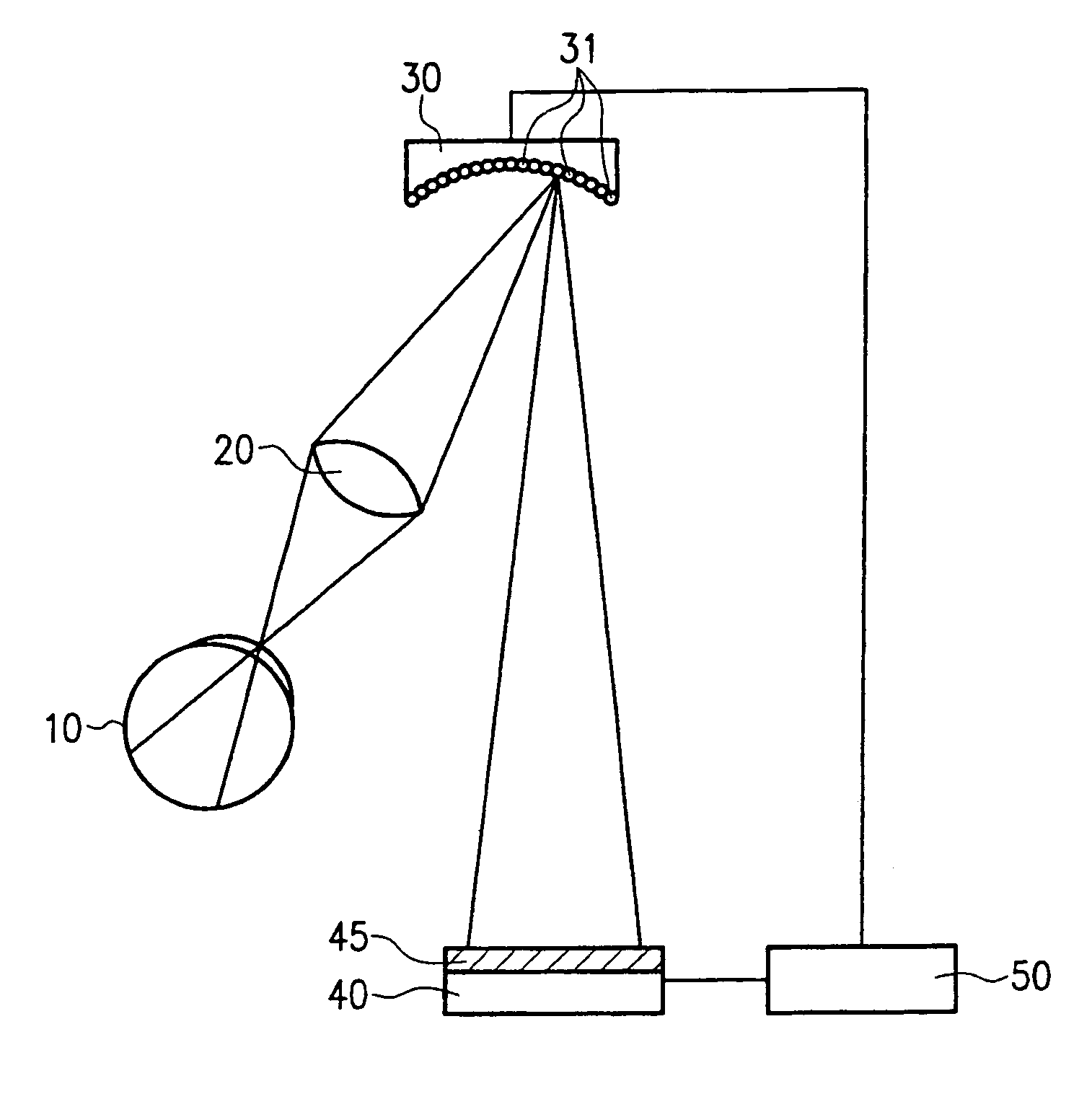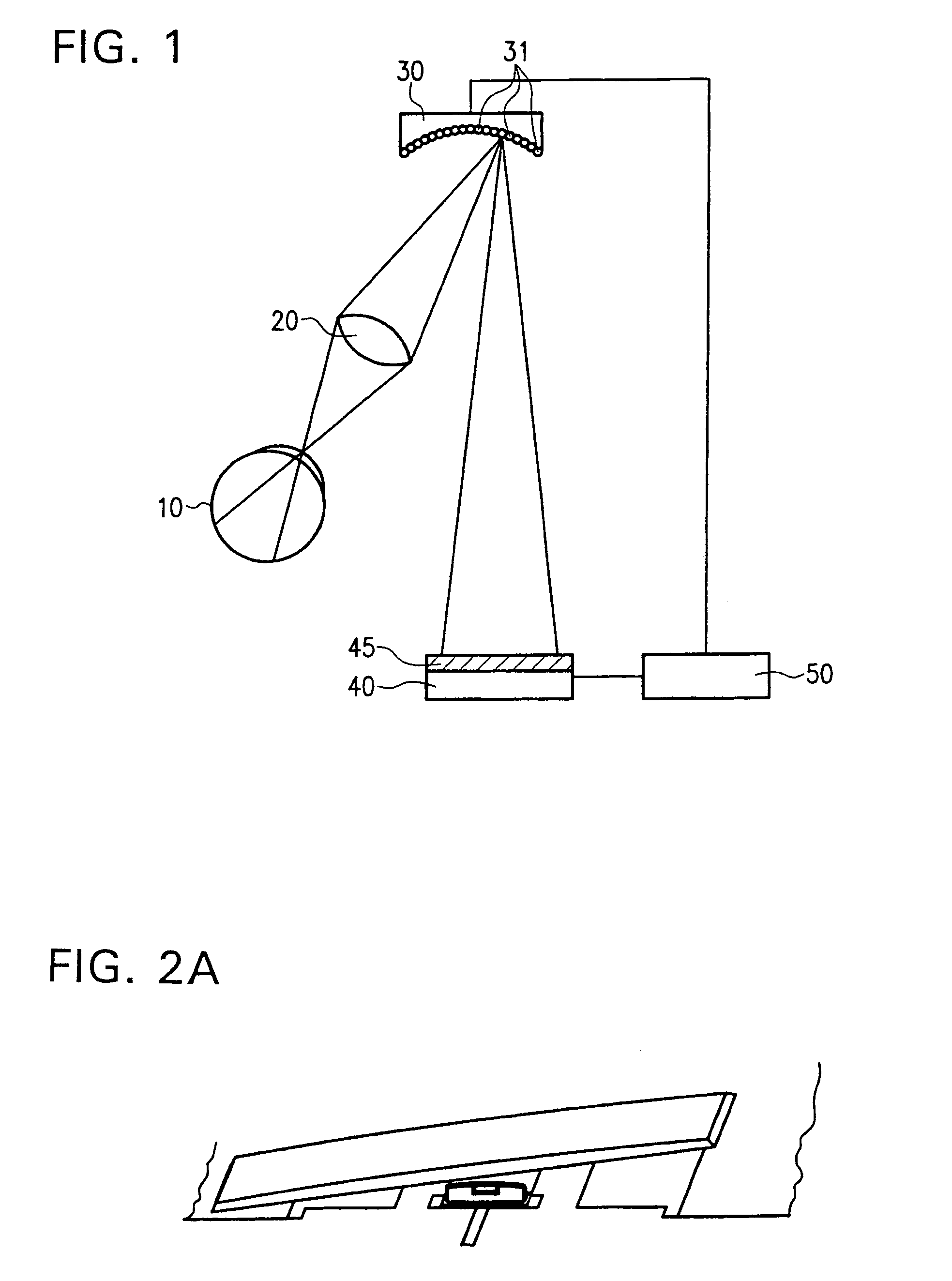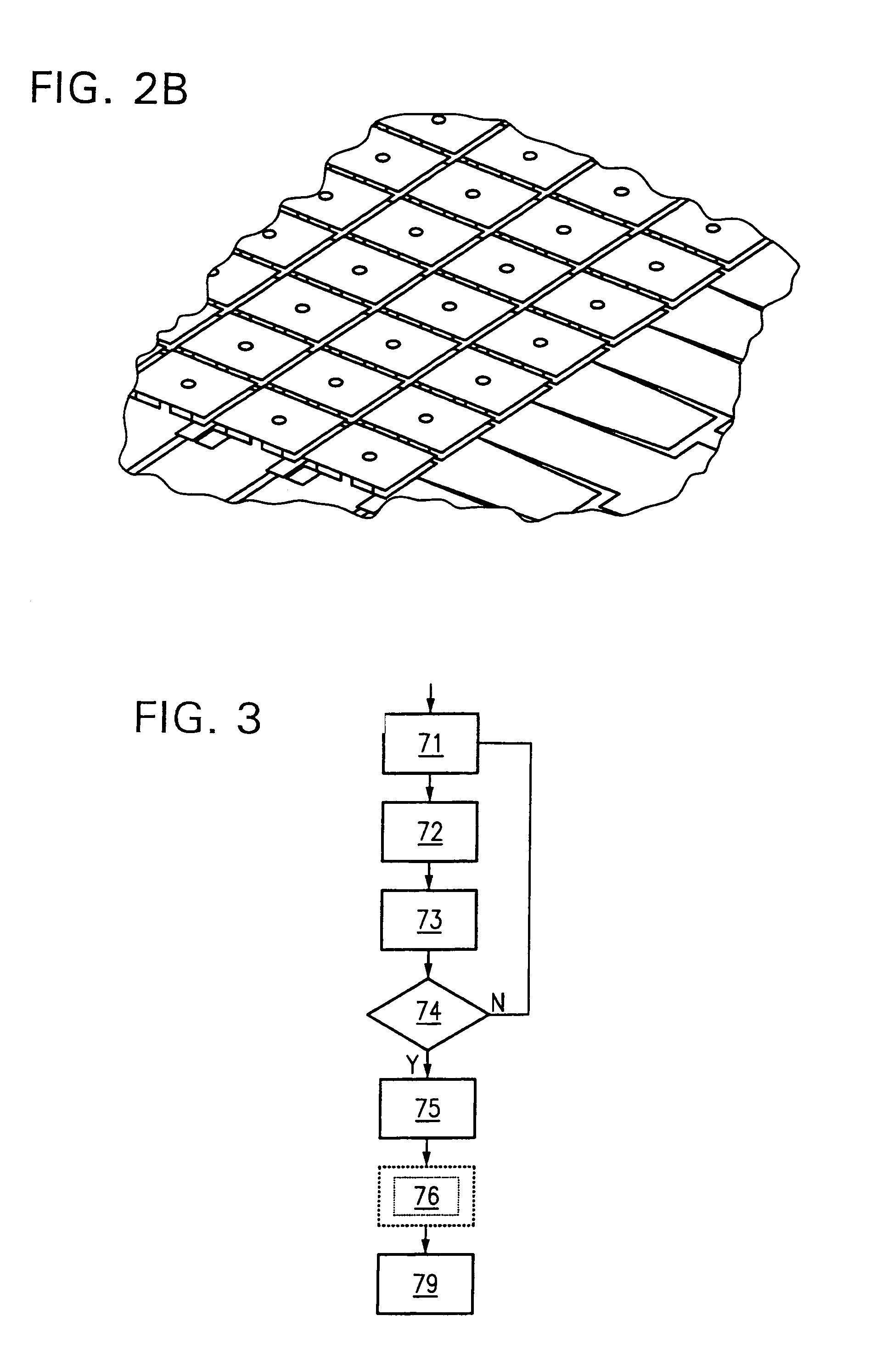Method for determining vision defects and for collecting data for correcting vision defects of the eye by interaction of a patient with an examiner and apparatus therefor
a technology applied in the field of eye examination and data collection, can solve the problems of falsification of even or odd-valent aberrations, and achieve the effect of easy capture and good utilization basis
- Summary
- Abstract
- Description
- Claims
- Application Information
AI Technical Summary
Benefits of technology
Problems solved by technology
Method used
Image
Examples
Embodiment Construction
[0055]FIG. 1 is a block circuit diagram of an apparatus embodiment in accordance with one aspect of the invention. The eye 10 considers, via a lense 20, a mirror-field, or an array of mirrors, of an adaptive optics 30 comprised of individual mirrors 31. An arrangement 40 for the projection of test images selectively produces test images45. A control system 50 is connected to the arrangement 40 for the projection of test images and to the adaptive optics 30.
[0056]The test image 45 is produced by way of the arrangement 40 for the projection of test images and is projected onto the adaptive optics 30. The individual mirrors 31 project the test image, via lens 20, onto the retina of the eye 10. The control system 50 captures the attitude of the individual mirrors 31 and the selection of the test image 45.
[0057]The patient now judges the subjective or actual quality of the image of the test image 45 on the retina of the eye 10, preferably by responding with “good” or “bad” in response to...
PUM
 Login to View More
Login to View More Abstract
Description
Claims
Application Information
 Login to View More
Login to View More - R&D
- Intellectual Property
- Life Sciences
- Materials
- Tech Scout
- Unparalleled Data Quality
- Higher Quality Content
- 60% Fewer Hallucinations
Browse by: Latest US Patents, China's latest patents, Technical Efficacy Thesaurus, Application Domain, Technology Topic, Popular Technical Reports.
© 2025 PatSnap. All rights reserved.Legal|Privacy policy|Modern Slavery Act Transparency Statement|Sitemap|About US| Contact US: help@patsnap.com



